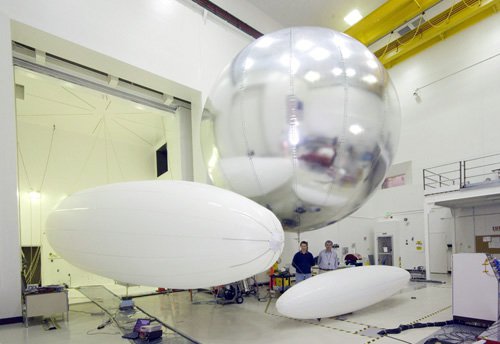
Three of JPLs prototype airships undergoing inflation tests.
JPL is developing planetary balloon technology in this task for future Titan and Venus missions. These buoyant vehicles could fly for weeks or months in the planetary atmosphere, carrying a wide variety of science instruments and conducting extensive in situ investigations. The work done in the task combines prototyping, testing and analysis to mature the balloon technology for first use by NASA in a planetary mission.
Planetary balloons are a direct extension of the balloon technology that has been used on Earth for the past two centuries. The main challenge is adapting that technology to the very different environments to be found at Titan, which is cryogenically cold (85 to 95 K), and Venus, which has very high temperatures near the surface (460 deg C) and sulfuric acid clouds in the much lower temperature (30 deg C) upper atmosphere. This adaptation includes the development and testing of suitable balloon materials that are flexible, strong and tolerant of the chemical and thermal environments, and the automatic deployment and inflation of the balloon. Balloons are much too large to be launched into space in an inflated condition; therefore, they are transported in a folded state and must be automatically deployed and inflated once they arrive at the target planet.
Current work is focused on the validation of thermodynamic design tools for Titan hot air (Montgolfiere) balloons, long-term leakage mitigation of Titan light gas (helium or hydrogen) balloons, and large (7 or more meters in diameter) Venus helium balloon prototyping and flight testing

